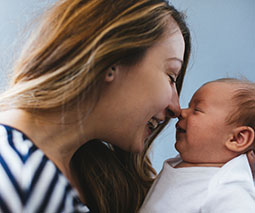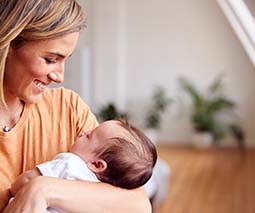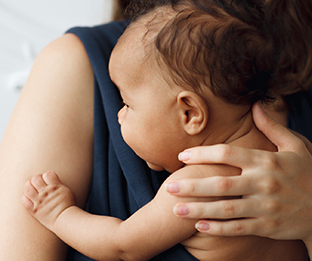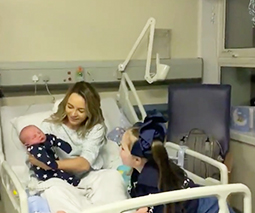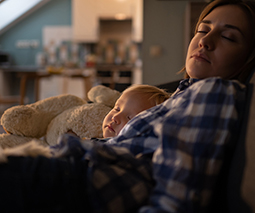Better out than in – what to do when your baby has wind

Wind can make life miserable for both you and your baby, but fortunately, there are simple techniques to help release it.
Let’s face it, everybody farts. But for babies, it’s not always such an easy process. According to the Mayo Clinic, gas in the digestive system is very normal, as is getting rid of gas, either by burping or passing gas (flatus). However, pain occurs when gas is trapped and unable to find it’s way out of the digestive system. This is particularly uncomfortable for babies who are not so efficient when it comes to ‘letting rip’.
Why do babies get wind?
Babies tend to get windy as they swallow a lot of air when they feed, cry or suck on a dummy. Plus they have an immature digestive tract that is still trying to adjust to milk, which can also make them gassy. It can be extremely uncomfortable when air bubbles get trapped in their little bodies, which is why it’s up to us parents to help them ‘fart’ those bubbles out.
Other parents who have been there and done that are a great source of handy hints when it comes to releasing your baby’s gas. Every baby is different and sometimes it’s a matter of finding what technique works best for yours. In the meantime, here are a few hot tips that might bring some much-needed relief.
Rubbing the tum
Gently massaging on your baby’s tummy in a circular motion can help to push the bubbles out the other end. “Try pressing down in gentle clockwise or counterclockwise motions,” suggest Medical News Today. “Let the baby’s reaction guide the pressure.”
Burp it out mid feed
As babies take in extra air while feeding, some parents find burping their babies mid-feed can help. Dr Steph Lee, spokesperson for American Academy of Paediatrics said to US News, “Burping your baby more frequently is a good way of getting rid of additional air he or she swallowed while feeding.” Dr Lee’s recommendation is to burp the child for several minutes between each five to ten minutes of feeding.
Bicycle legs
This is a popular and simple technique that basically involves lying your bub on his back and moving his legs as if riding a bicycle, in a gentle peddling motion. One mum, Sophia, remembers her baby being very windy and she found that cycling his legs and gently lifting them up to his head really worked at one point. “But I really think time and gut maturity are what eventually fixed it,” she says.
Finding the right position
Sometimes it takes a bit of trial and error to find a good position for your baby that will help release unwanted air. One parent, Angela, who has an extremely windy baby, finds it best to sit in the rocking chair and lay him on his back with his legs in the air, knees to his chest. “Not fun for me when the wind is freed,” she says. “But it’s like a game for my son now and the position provides him instant comfort.”
Another mum, Amelia found another solution. “Once my youngest got some strength, I used to drape her belly horizontally over my thigh,” she says. “She used to kick her neck and legs back and voila! El farto!”
If all else fails …
You can always run a nice, warm bath which is soothing for any baby, let alone one that is gassy and unsettled. At least it will help calm their crying and relax their muscles, perhaps encouraging that troublesome gas to simply release on its own accord.
Rest assured, all babies get gas, which is painful for them and stressful for parents. But fortunately, at some point, as your baby grows, develops and learns to digest food, life won’t be quite so windy.
